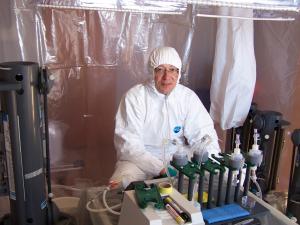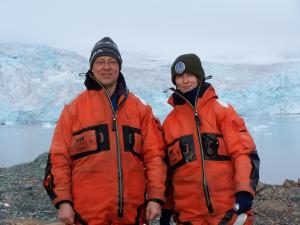Science in the pink tent
Back from Antarctica since three weeks, we are waiting for our equipment and the samples to return on the Russian cruise vessel Polar Pioneer. Next to sediment and porewater samples that we collected together with Jan, about 250 kg of filtered water from Maxwell Bay are making their way to Germany.
As mentioned in our previous blog entry, we try to identify the sources of dissolved (bioavailable) iron close to King George Island by using iron isotopes. Iron is discharged into the seawater either in dissolved or particulate form via meltwater streams or as nano-particles/sediment transported via icebergs. Poorly soluble iron particles accumulate on the ocean floor where they may subsequently be remobilized during early sediment diagenesis and recycled to the water column as soluble iron. Alternatively, iron nano-particles may simply be more readily dissolved directly in the surface ocean. You see, the iron cycle (from solid phase to the bioavailable speciation) is anything but trivial. Different pathways lead to distinct iron isotopic signatures and this is the way we try to track them.
There is one more problem: Iron is the fourth most common element in the Earth's crust, but it is present in the ocean in very low concentrations (in the order of nM, which is 10-9 mole per liter). Therefore, we need to take great care not to contaminate our samples during the sampling itself and the subsequent processing. For taking our samples from different water depths, we used so-called GoFlo-bottles. They open only in a depth of ~10 m, so that a contamination coming from the ship or Zodiac is reduced. All of our equipment is metal-free. And the most fancy thing: we processed the samples in a pink clean tent (the air inside is filtered, too). To avoid bringing dust into the tent, we wore antistatic coveralls. (Some people on Carlini station thought we were “loco”…)
 |
 |
Thanks to many people on Carlini (former Jubany) Station, we successfully finished our program. And we got a lot of material to work with in our home-laboratory.

